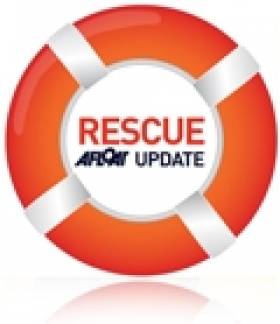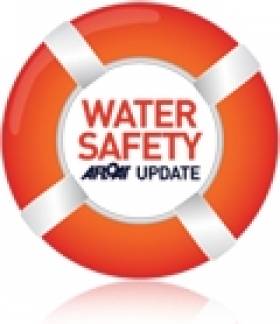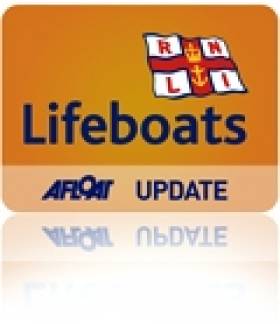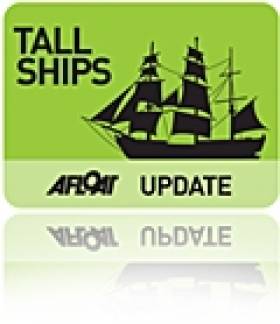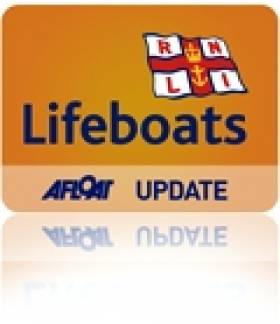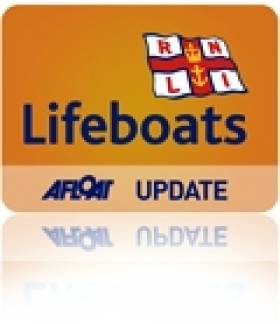Displaying items by tag: Rescue
Lifeguards Rescue 559 Swimmers During Heat Wave
#rescue – The CEO of Irish Water Safety, John leech is urging the public to use the Local Authority manned lifeguarded bathing places to ensure there are no more tragedies this summer. Take heed of advice given by the lifeguards and supervise your children, lifeguards are not baby sitters.
Irish Water Safety Lifeguards rescued 559 casualties from our beaches, rivers and lakes during the month of July, that is over 160 more than for the entire bathing season last year.
There were 575 lost children reunited with their parents which is 250 more than for the entire bathing season last year.
There were another 11,421 accidents prevented by the proactive actions of our lifeguards.
80% of Drownings Occur Close to Home
#drownings – Irish Water Safety is appealing to the public to swim at Lifeguarded waterways and to stay within their depth when swimming at any other bathing areas. Drownings often happen quickly and silently with 80% of drownings occurring close to the victim's home.
The range of aquatic activities is extremely varied yet what is tragically constant each year is the gender most at risk - males - tragically reflected in the fact that of the 147 drownings last year, 113 were male and 34 female*.
An alarming 47% of accidental drownings occurred in the 30-59 year age group clearly demonstrating that regardless of age, one is never too old to learn how to stay safe around water.**
August is the most popular month for outdoor swimming which can be enjoyed safely by heeding the following swimming safety tips:
Top Tips for Safe Swimming in August:
Swim at lifeguarded waterways - listed at www.iws.ie.
Swim with others in recognized, traditional, safe bathing areas. Many beaches have warm waters in the high teens to twenties at present and are ideal for swimming however please swim in areas that are known locally to be safe.
Swim within your depth, parallel and close to shore and stay within your depth.
Never use inflatable toys in open water or swim out after anything drifting.
Pay attention to signs on the beach.
Never swim in the dark or late at night.
Avoid staying in the water too long.
Wait a while before swimming if you're hot or tired.
Learn to use equipment before trying it out.
Learn resuscitation skills.
Water-safety advice that will save life:
Drownings will decline if the following rules, however familiar they seem, are never taken for granted:
- Wear a Lifejacket. Find out what device suits your needs athttp://www.iws.ie/guides-page24421.html .
- Avoid unsupervised areas. Whenever possible, swim in an area that has a lifeguard. Irish Water Safety has details of all lifeguarded waterways nationwide listed athttp://www.iws.ie/bathing-areas-page.html .
- Learn swimming and lifesaving. Irish Water Safety has swimming and lifesaving classes for children and adults. Log on to find one near you athttp://www.iws.ie/courses--jobs-page.html#Courses .
- Watch for changing weather. Be prepared to get out of the water and take cover if the skies look threatening.
- Avoid alcohol. Water sports and alcohol don't mix. Tragically, alcohol is a factor in one third of adult deaths from drowning. Alcohol impairs judgment, balance and coordination - all essential for swimming and boating and avoiding hazards in the water.
- Watch children constantly. Children are irresistibly attracted to water. Take the time to protect your children from the dangers of water. Teach them in advance at www.aquaattack.ie.
- In Marine Emergencies, call 112 and ask for the coastguard.
* Total Drownings: 147 65 Accidental, 49 Suicide, 33 Undetermined
Rugby Star's Cousin Knocked Out In Diving Accident
#WaterSafety - Herald.ie reports that a young cousin of rugby international Jonny Sexton was "shocked but recovering well" after she was knocked out in a diving accident last week.
Fourteen-year-old Kelly Sexton was diving with friends off a 50-foot ledge at Diamond Rocks in Kilkee, Co Clare to celebrate her birthday when she apparently struck the water at an angle that rendered her unconscious.
Thankfully her friends came to her aid immediately and cared for her until she was airlifted to University Hospital Limerick by the Shannon coastguard rescue helicopter.
The incident came on the last weekend of the nationwide heatwave that saw a shocking 10 drownings around the island of Ireland.
#RNLI - The volunteer lifeboat crew of the Courtown lifeboat launched last Wednesday evening (24 July) to a report of a small fishing boat that was overdue on its time to return to Cahore Pier.
The Courtown RNLI lifeboat, Cahore Inshore Rescue, the Rosslare RNLI lifeboat and the Irish Coast Guard helicopter Rescue 117 were all tasked at 7pm to search the area of Cahore on the north Wexford coast, where the boat was last reported fishing.
After searching for some time, the small fishing boat made contact to say they had beached their boat some eight miles north of Cahore Pier at Kilgorman Beach. Both men were safe and well and all rescue services were stood down.
The Courtown lifeboat has since urged all boat users carry a proper means of communication - ideally a VHF radio - and to keep friends and family up to date on their location, especially if they decide to change their location.
That same evening, Rosslare Harbour RNLI was involved in a search for two fishermen after they reported getting into difficulty off the Wexford coast.
The volunteer crew launched their all-weather lifeboat at 7.30pm to assist in the search following a request from the coastguard to attend a fishing boat that was reported to be taking on water.
Weather conditions at the time were described as good, with a southerly force three wind.
The fishing boat had set out from Cahore Harbour before getting into trouble. The two crew raised the alarm using a mobile telephone.
Rosslare Harbour RNLI and lifeboats from Courtown RNLI and Cahore, along with the Rescue 117 helicopter, joined in the search.
At 7.50pm, Rescue 117 located the two fishermen safe and well and their vessel on the beach at Glasgorman, near Cahore.
Speaking after the call-out, Rosslare Harbour RNLI deputy volunteer lifeboat press officer Jamie Ryan said: "The emergency services responded swiftly and were on scene quickly.
"The two fishermen did the right thing by raising the alarm when they got into difficulty and thankfully they were both found safely ashore."
Four RNLI Lifeboats Rescue Crew From Sunken Tall Ship Astrid
#TallShips - Four RNLI lifeboats were involved in the rescue of 30 crew from the tall ship Astrid, which sank off the Cork coast earlier today (Wednesday 24 July).
The 42m Dutch training vessel reportedly hit rocks inside the Sovereign Islands at Ballymacus Point, near Kinsale.
All on board were brought to safety when the Kinsale lifeboat transferred the casualties from the sinking ship onto the Courtmacsherry RNLI lifeboat and a local vessel. They were then taken to Kinsale.
Both Kinsale and Courtmacsherry RNLI lifeboats were called out at 12 noon today to go to the immediate aid of the sail training vessel that had got into difficulties on the western entrance to Kinsale Harbour in Cork.
Ballycotton and Crosshaven RNLI were also launched, though the Kinsale RNLI lifeboat was first on scene. There was a 2m swell and winds were force five to six.
The training vessel had lost power and was apparently driven on to rocks by a strong southerly wind at the western entrance to Kinsale Harbour. The grounded vessel was taking on water and a crewmember from Kinsale RNLI was put onboard.
Eighteen of the casualties were taken off the Astrid by Kinsale RNLI lifeboat and transferred to Courtmacsherry lifeboa, before being brought to safety. The remaining 12 were put onto a liferaft deployed by the Astrid’s crew, which was towed to safety by the Kinsale lifeboat and picked up by a local vessel.
The people on board the liferaft were then taken to Kinsale harbour and assessed by medical teams.
Irish Coast Guard helicopters from Waterford and Shannon were also on scene along with ambulances and medical crews from Cork.
Speaking about the call-out, Courtmacsherry RNLI coxswain Sean O’Farrell said: “Everyone was very fortunate. I want to praise the quick thinking of the skipper and the crew from the Astrid. They kept calm and did everything we asked them to do. We were able to get them to safety quickly and a major tragedy was averted. To be able to recover 30 people safely was a great day for everyone involved.”
Meanwhile, the Irish Sailing Association has issued the following media statement on behalf of the tall ship Astrid:
Tall Ship Astrid was on a voyage from Southampton to Cherbourg calling in to Kinsale. On board were 23 trainees from France, Ireland, the Netherlands, UK and Spain. The crew were from Belgium and the captain, Pieter de Kam was from the Netherlands.
As the Astrid was leaving Oysterhaven, as part of The Gathering Cruise parade of sail to Kinsale, the vessel experienced engine failure. They notified a nearby RIB which was being helmed by Irish Sailing Association (ISA) CEO Harry Hermon.
The RIB attempted to take a line from Astrid. However, due to the onshore winds and swell this was not possible. Captain de Kam issued a May Day.
The ISA RIB and the yachts in The Gathering Cruise flotilla stood by until the RNLI arrived. There was a safe rescue of all 30 crew who were brought to Kinsale on board the yacht Spirit of Oysterhaven and the lifeboat. All crew were brought to Kinsale Yacht Club where they were provided with showers, food and dry clothing. They were all medically checked and are in good health.
Sail Training Ireland and Kinsale Yacht Club are working together to make arrangements for accommodation and for returning the crew to their homes.
Commenting on the rescue, Captain Pieter de Kam of the Tall Ship Astrid stated: “I would like to thank the lifeboat and the coastguard for the safe rescue of all my crew. We very much appreciate their outstanding work.”
Harry Hermon, CEO of the Irish Sailing Association, commented: “It is thanks to the rescue services that all crew were rescued quickly and safely without injury. I would also like to thank all the sailors from the Gathering Cruise who stood by Astrid providing support to the crew.
"Kinsale Yacht Club has also been fantastic providing food and clothing and helping Sail Training Ireland find accommodation for all the crew”.
BREAKING: Tall Ship Taking On Water Off Cork Coast
#TallShips - RTÉ News is reporting on a major rescue operation off the Cork coast involving the tall ship Astrid, which has hit rocks and is taking on water.
As of 1pm, some 12 of the 30 people on board the training vessel had been taken off to nearby Kinsale as the ship lists in the waters at Oysterhaven.
Afloat.ie will have more on this breaking story as it emerges.
Update 1.18pm: RTÉ News is now reporting that all 30 people on board the Astrid have been rescued from the vessel, which is taking on water amid strong winds.
Update 6.15pm: The latest news from Oysterhaven is that the tall ship Astrid has sunk, and RTÉ News has photos and video from the scene. Is is still unclear how the Dutch training vessel came to hit rocks and take on water.
Update 6.20pm: Karl Grabe has posted the above video showing the capsized Astrid being overwhelmed by heavy seas.
Update 6.55pm: Afloat.ie has posted news of the RNLI's rescue of the Astrid's 30-strong crew in an operation involving four lifeboats - plus a statement on behalf of the sunken vessel.
#RNLI - The Castletownbere RNLI volunteer lifeboat crew have aided in the recovery of the body of a man from the sea some 2.4km off Travarra on the Beara Peninsula in West Cork.
The lifeboat launched at 1.35pm yesterday afternoon (Monday 22 July) and was joined by Irish Coast Guard helicopter Rescue 115, Derrynane inshore rescue and the Castletownbere coastguard.
A man believed to be in his earl 20s was sighted in the water at Travarra at around 2.30pm and recovered by a local vessel before being transferred onto the RNLI lifeboat and returned to Castletownbere. He was pronounced dead at the scene by a doctor.
Commenting on the call-out, Castletownbere RNLI deputy coxswain Paul Stevens said: “This is a terrible tragedy and we extend our sympathies to the young man’s family and friends.”
Big Rise in Coastal and Inland Rescue Calls Over 2012
#WaterSafety - Rescue call-outs for people swimming in inland waterways have risen more than 100% over the past two months compared to the same period last year, as The Irish Times reports.
Coastguard call-outs overall have risen 50 per cent in the same timeframe, with calls to help coastal swimmers up by more than half on 2012 figures.
With the death toll from drownings during the continuing heatwave now standing at 10 after two weeks, the Irish Coast Guard has also highlighted a growing number of "close shaves" that could have doubled this already shocking figure.
According to the Irish Examiner, coastguard units throughout the country dealt with 72 incidents this past weekend alone.
These include two children rescued at Ballybunion in Co Kerry after drifting out to sea on an inflatable toy.
Dinghy Man Rescued Attempting Daft UK-Ireland Crossing
#CelticSea - A British man's unorthodox attempt to cross the Celtic Sea from Dorset to Ireland has come to an end after he was rescued by the UK coastguard.
A RTÉ News reports, the man was discovered some 2.7 nautical miles south of Durdle Door on Dorset's Jurassic Coast in a 6ft inflatable dinghy.
He was found with two paddles - one being used with a plastic sheet as an improvised sail - plus a limited amount of food and drink, and no suitable communication or lifesaving gear.
Rescuers later brought the man back to shore where he was treated for severe sunburn.
RTÉ News has more on the story HERE.
#RNLI - RNLI Bangor's lifeboat launched at 4pm on Friday (12 July) to assist with the medical evacuation of an unconscious sailor from a 26ft yacht.
Within minutes of the rescue pagers being activated, volunteer crew had the lifeboat launched and quickly located the yacht in Ballyholme Bay, on the southern shores of Belfast Lough.
Crews from other vessels in the vicinity also quickly responded to the Mayday call; they had been able to come alongside the yacht and had administered first aid to the injured sailor. Once medically stabilised, the sailor was taken onboard the Bangor lifeboat.
Fine weather conditions allowed the lifeboat to proceed at full speed back to Bangor, were the injured sailor was transferred into the care of waiting paramedics.
Dr Iain Dobie, a volunteer crewman with RNLI Bangor, praised the actions of all crews involved.
"When the call for help went out we are pleased that crews from other vessels close by had quickly responded and provided vital medical assistance. They did a fantastic job, by the time we arrived the gentleman was conscious."
He added: "We all wish him a full and speedy recovery."



























